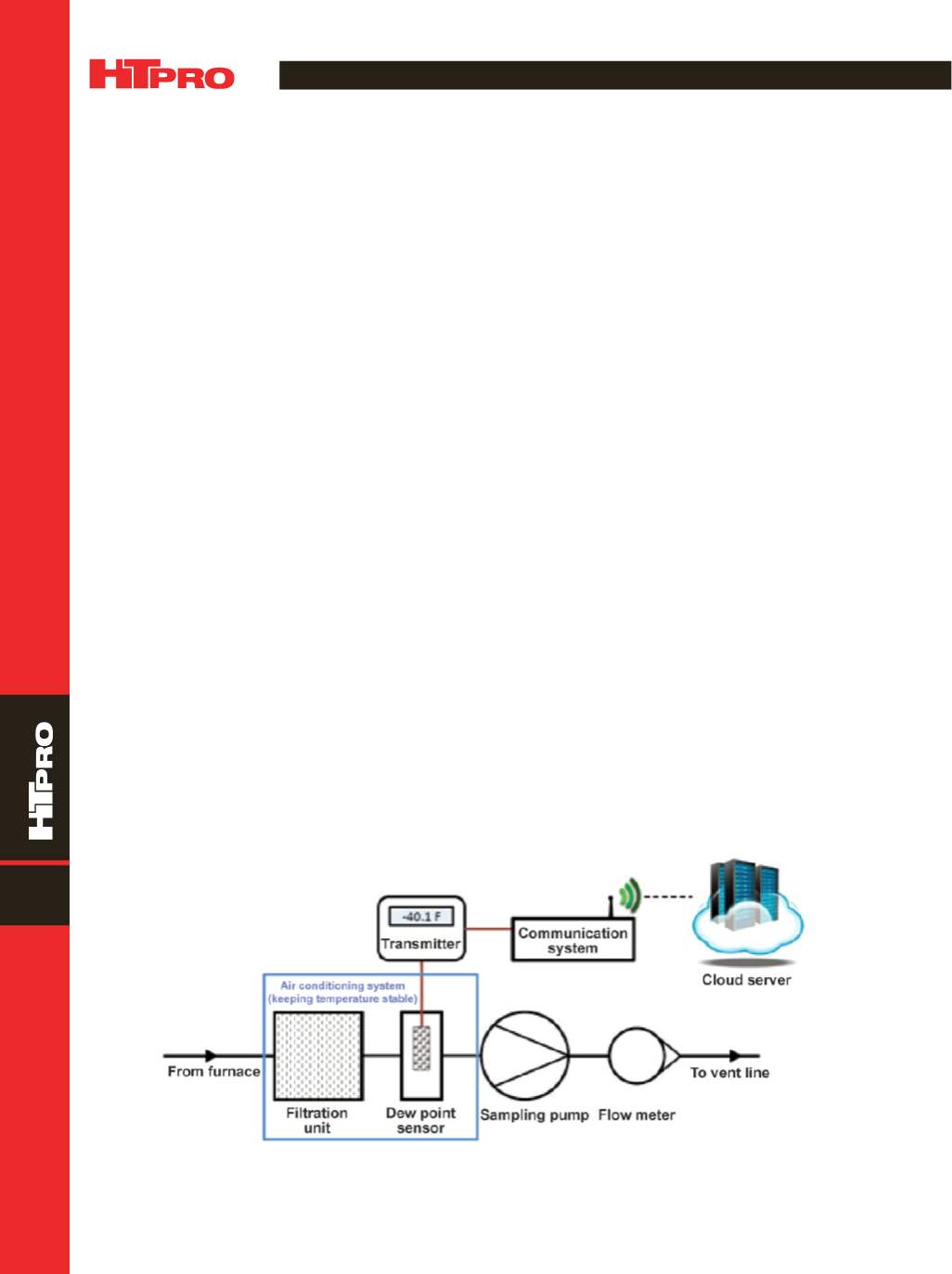

FEATURE
A D V A N C E D M A T E R I A L S & P R O C E S S E S | S E P T E M B E R 2 0 1 6
4 4
12
In polymer-based DP sensors, a polymer film is filled
withmicropores for water vapor condensation, and its phys-
ical properties change with the amount of water absorp-
tion
[5]
. The hot-zone atmosphere in a sintering furnace is very
complicated upon reaching equilibriumwith the steel parts,
belt, and trace hydrocarbon gas additions that are occasion-
ally used to adjust carbonpotential. This could includewater
vapor, metallic or organic vapors of green-body lubricant
and carbon particles (soot), carbon monoxide, carbon diox-
ide, and methane
[6]
. Polymer-based DP sensors have been
developed to resist particulate contamination, oil vapors,
and most chemicals. This type of thin-film polymer DP sen-
sor ensures continuous, reliable DPmeasurements.
CASE STUDY: CONTINUOUS DP
MONITORING SYSTEM
Although a thin-film polymer sensor is resistant to par-
ticulate contamination, condensation, and most chemicals,
it can still be permanently damaged after long exposure in
the hot, toxic sintering atmosphere. Thus, a special sampling
and monitoring systemwas designed to reliably and contin-
uously measure the DP of a hot-zone atmosphere with less
maintenance.
The Air Products DP measurement solution enables
sampling hot-zone atmosphere from the point of interest
using a vacuum pump. Passing the gas sample through a
temperature-controlled filtering system conditions the gas
before entering the DP sensor. DP measurements and other
information are collected and sent to a cloud server, and are
easily accessed by visiting webpages using a computer or
smartphone. A schematic of the continuous dew point mon-
itoring system is shown in Fig. 2.
TEMPERATURE CONTROL AND FILTRATION
A change in DP sensor temperature affects the DP
reading due to the intrinsic physical properties of the sensor
material. Thus, maintaining a stable sampled gas tempera-
ture and sensor temperature is the initial challenge in consid-
ering the complicated operating environment of the system
to achieve continuous, reliable DP measurement. The new
system incorporates an air conditioning systemdesigned for
the filtration unit and DP sensor container, which enables
continuous, precise control of the sampled gas and DP sen-
sor temperatures.
Reliable, accurate DP measurement of the complex
hot-zone atmosphere requires a well-designed filtering sys-
tem. If contaminants in the sampled gas are not removed,
they affect the measurement by permanently poisoning the
instruments, especially the DP sensor, and shortening the
service life of the entire system. The Air Products system
incorporates a staged filtration unit designed with several
sintered stainless steel filters to completely remove different
kinds of contaminants.
REDUCED MAINTENANCE
Integrating a periodic self-cleaning function into this
system eliminates frequent (sometimes monthly) calibra-
tions of the DP sensor as well as sampling system mainte-
nance. This function ensures the cleanliness of the filtering
system and DP sensor itself. Drifts/changes of DP readings
on the calibration gas were not observed after more than
six months of operation. It is recommended that the DP
sensor is calibrated once a year. The filtration system can be
replaced or regenerated in a fewminutes at minimal cost.
Fig. 2 —
Schematic of continuous dew point monitoring system.


















